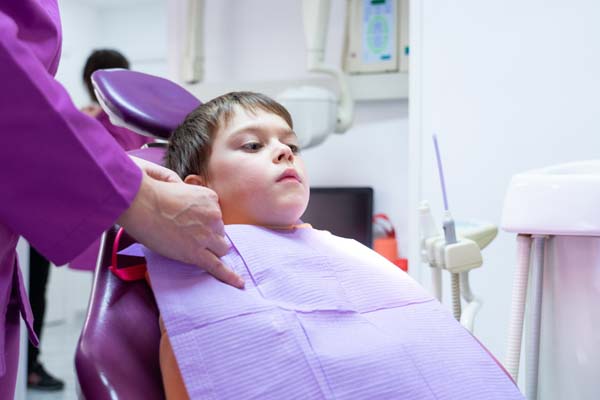What Is a Tongue Tie Revision

A tongue tie revision is necessary to prevent problems with oral functions. Affected children need to go through this procedure early in life. Understanding this all-important surgery can help you make informed decisions for your child. Here are the details that you must consider about a tongue tie revision.
The need for the procedure
Mouth structures form from a strong strip of tissue. This tough tissue cord makes sure that the oral structures settle at the center of the mouth. The cord is called the frenulum, which thins and recedes as the child develops. The labial and lingual frenula are visible if one inspects them in front of a mirror.
Some kids have very tight frenula. This means that the tissue failed to recede. The situation may lead to lip or tongue mobility issues. A child’s lips and tongue are complicated muscle groups that are crucial for full development. That is why a tongue tie revision is necessary for kids who have problems with oral functions.
Before the tongue tie revision
A dentist for children will ask about the child’s health and development. Inspecting the oral structures is also important during the first checkup. There will be a diagnosis after a proper examination. The child must go through a tongue tie revision if the frenulum does not thin out as the child gets older.
During the procedure
A tongue tie revision will take only minutes to perform. Modern surgical technology will make the procedure comfortable for the child. Most patients need a small dose of local anesthetic. This will be enough to block any pain during the surgery. Numbing the area with an anesthetic cream will make the procedure comfortable. There are other sedation and anesthetic options available as well.
Parents will be outside the treatment room. Young kids often cry because their mouths will be open. The numbing may also seem strange to them. Comforting the child is important before the quick surgery begins.
The dentist will use a laser to perform the tongue tie revision. This high-powered light beam will cauterize the tissue as it reduces pain, swelling, or even bleeding. The dentist will also use the laser to remove the smallest amount of tissue. Doing so will not affect the child’s development.
Most patients do not suffer from complications after a tongue tie revision. Babies as young as a day old can have this procedure. The gentle removal of the frenulum will result in almost no bleeding. There will be no stitches, either. This will enable the baby to nurse right away.
After the tongue tie revision
The minor discomfort from the surgery will last for about a day in younger kids. Older children will experience this for about two days. There could be some swelling for a few days after the procedure. Babies can get natural pain relief from skin-to-skin contact and breastfeeding. Children can take homeopathic and over-the-counter pain relievers for the pain. Remember to check with the dentist before giving these medications to the child to prevent health risks.
Direct pressure on the surgical site can stop the minor bleeding right away. Remember that the areas of tongue tie revision will appear yellowish or white, which is the result of natural healing. This is not a result of an infection. Complete healing will need a few weeks. The dentist will provide proper aftercare instructions as well.
Useful exercises for babies and toddlers
Healing with the help of stretching exercises can help lower the child’s need for future procedures and risk of reattachment. These exercises must begin on surgery day. Stretching the tongue and lips should last for three to five seconds. Repeat this six times in one day. The dentist will show how this is done before the surgery. Children may fuss or even cry during these exercises, but they often relax when the session is over.
A thickened frenulum restricts the muscles of the tongue. This tells the other muscles of the mouth to compensate. The child will not have any muscle memory of having a released frenulum. It will take some time to train the brain how to use the tongue once it is free.
Your child’s tongue tie revision can improve your child’s health and quality of life
It can be alarming to find out that your child has a tongue tie. After all, this condition could affect your child’s development. A tongue tie revision can correct this condition. It is a procedure that has a low risk of complications. Guiding your child’s journey to better oral health is necessary before, during, and after the tongue tie revision. Working with your dentist can help your child heal quickly after this surgery.
Request an appointment here: https://www.hvkidsmiles.com or call Hudson Valley Pediatric Dentistry at (845) 363-4177 for an appointment in our Middletown office.
Check out what others are saying about our services on Yelp: Read our Yelp reviews.
Recent Posts
An emergency pediatric dentist can help children who are experiencing urgent issues with their oral health. For kids, this most commonly happens due to a blow to the face or an accidental fall, but dental emergencies can arise for any number of reasons. Having an emergency dentist on call ahead of time is a useful…
Sports injuries happen, and sometimes, they cause injury to the teeth or mouth. Fortunately, an emergency pediatric dentist can treat sports-related dental trauma. Their goal is not only to treat the injured tooth but also to restore and preserve the smile's overall health.There are many ways in which the mouth can get injured while playing…
An emergency pediatric dentist is a dental professional who sees children for their urgent oral health issues. Some emergency dentists also work as regular dentists and open their offices for emergency visits as needed. Others work solely on emergency cases, to serve people who do not have the luxury to wait for an appointment.Having an…
Wondering whether you should find an emergency pediatric dentist? Read on to learn about the importance of having one's contact information handy. A dental problem is always difficult to cope with. However, it gets harder when it occurs at night, during working hours, or on weekends. It helps to have an emergency pediatric dentist available…


